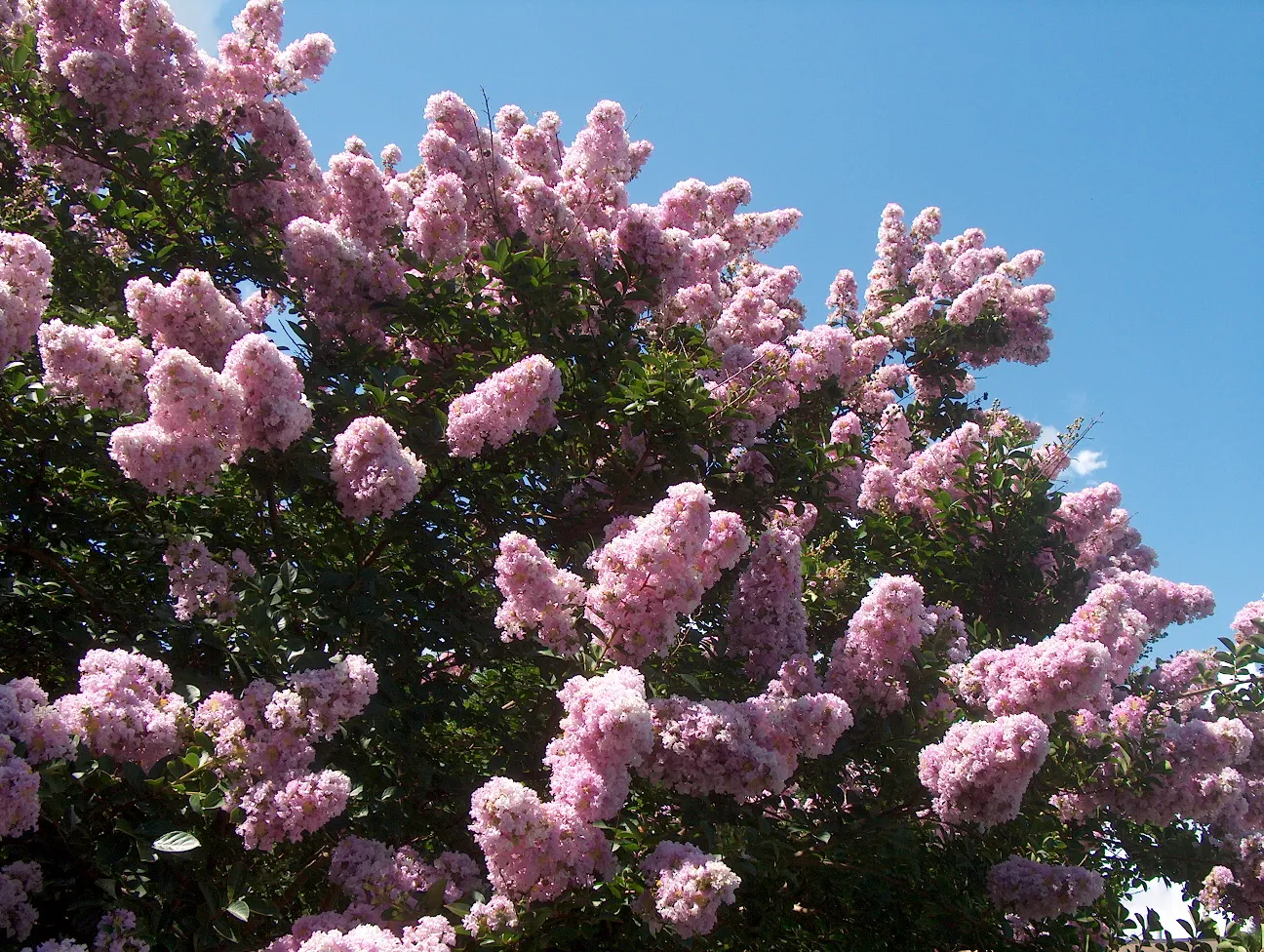It’s hard to find a plant that can compete with crape myrtles for stunning summer color, making it a popular addition to Gainesville landscaping projects. Crape myrtle plants thrive in heat and humidity and their drought tolerance makes them perfect for the Gainesville climate.
Though many people in our area plant crape myrtles few people prune them correctly, and at the right time. Correct pruning yields gracefully shaped trees with more blooms that are held upright on strong stems and those beautiful flowers arrive earlier on properly pruned crape myrtles than do those on unpruned or incorrectly pruned plants.
Crape myrtles bloom on new growth, so prune them in early spring before they break dormancy. Although some gardeners prune their crape myrtles in the fall, I do not recommend doing this. Fall pruning not only creates an unattractive look for winter but also removes the current year’s growth as a buffer against any potential winter damage. Good pruning while crape myrtles are young will mean less maintenance when the trees are older.
The objectives of pruning a crepe myrtle are to maintain its natural sculptural form, produce strong branches that hold flowers upright, and open up its center to reveal the smooth, multi-toned bark that forms on mature trunks and branches. Cutting it back to thick stubs each year makes these goals impossible. A graceful tree quickly becomes a fencepost or hat rack and pretty bark never appears.
For the Do-It-Yourselfers I recommend that you follow the guidelines below, or if you’d like to speak to us about having The Master’s Lawn Care take care of all of your Gainesville lawn maintenance needs, please call the office at 352- 378-LAWN or email me directly at rusty@themasterslawncare.com.
PRUNING GUIDELINES
- Pruning for safety may be done anytime. This may involve removing damaged or weak branches or pruning lower limbs clearance and visibility.
- Pruning to improve plant structure, redirect growth, or alter plant shape and appearance should be done in late winter when plant is dormant and leafless so that the branching structure is clearly visible.
- Remove suckers at the base, crossing or rubbing branches, and branches growing inward toward the center of the plant.
- As the tree grows, gradually remove all side branches from the main trunks up to a height of 5 feet or so.
- Cut back to another branch, to just above an outward-facing bud on a branch, or to the branch collar (a swollen area where the branch joins the trunk). Never leave lone or clustered stubs.
- Try to remove unwanted branches before they get thicker than a pencil.Remove vigorous branches growing toward the center of the canopy.
- Severe pruning should be performed late in the dormant period. Pruning too early might stimulate new growth that could be damaged by low temperatures.

To summarize, instead of pruning Crape Myrtles too early and too harshly, prune in late February or early March just before the new growth emerges and prune a couple of feet under each seed pod head. This will promote healthy blooms and keep new growth from emerging too early.


